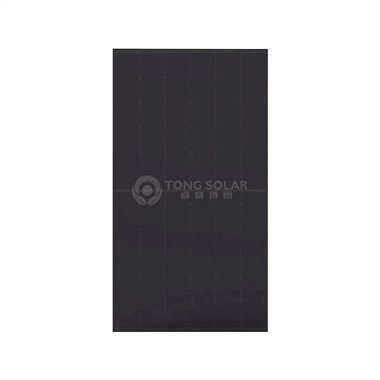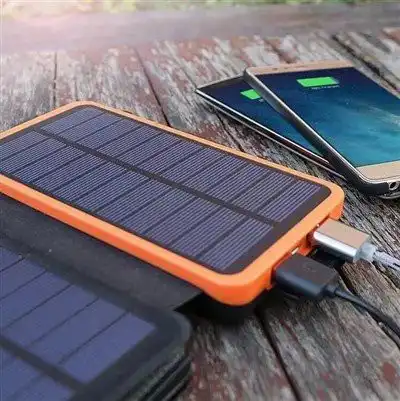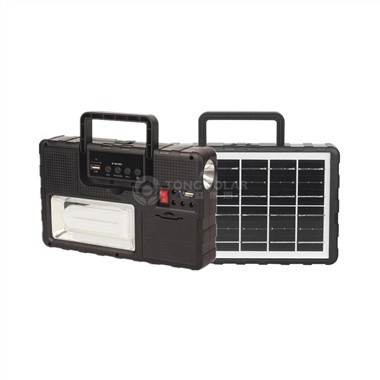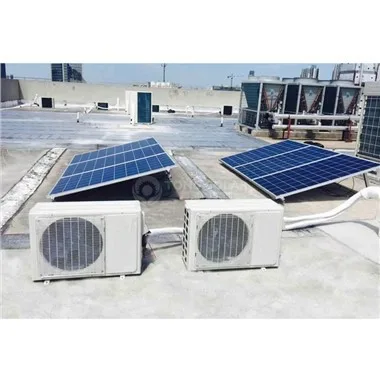What Is the Difference Between Type 1 Type 2 and Type 3 EV Chargers?
2024-01-31 10:18:45
Electric Vehicle (EV) chargers come in different kinds, each intended to take special care of various charging needs and situations. Grasping the distinctions between Type 1, Type 2, and Type 3 EV chargers is pivotal for EV proprietors to come to informed conclusions about charging their vehicles.
Type 1 EV chargers, otherwise called SAE J1772, are generally tracked down in North America and Japan. These chargers utilize a solitary stage AC power supply and element a 120-volt plug, making them reasonable for private charging. Type 1 connectors have a five-pin configuration, empowering both charging and correspondence between the EV and the charging station. Even though Type 1 chargers are slower than their counterparts, they are useful for overnight charging at home or in places where parking is more time-consuming.
Then again, Type 2 Portable EV Charger, otherwise called Mennekes, are generally utilized in Europe. These chargers support both single-stage and three-stage AC power supplies, taking into consideration quicker charging speeds. The seven-pin design of Type 2 connectors includes additional pins for three-phase charging capabilities. Type 2 chargers are suitable for a variety of charging scenarios, including home charging, public charging stations, and workplace installations due to their adaptability. Moreover, the Sort 2 Compact EV Charger gives the accommodation of in a hurry charging, permitting EV proprietors to convey their charging arrangement any place they travel.
Type 3 electric vehicle (EV) chargers, also referred to as the Scame system, are more rare and primarily found in France. These chargers utilize a three-stage AC power supply, offering quicker charging speeds contrasted with Type 1 chargers. The Sort 3 connector has a five-pin plan, and like Sort 1, it upholds correspondence between the vehicle and the charging station. While not as pervasive worldwide, Type 3 chargers assume a critical part in the French EV charging foundation.
The Sort 2 Convenient EV Charger adds an additional layer of adaptability for EV proprietors. This compact arrangement generally accompanies a Sort 2 connector, empowering similarity with an extensive variety of charging stations. The comfort of a versatile charger permits clients to plug into different power source, pursuing it a phenomenal decision for voyagers or people who might not have a committed home charging station. The flexibility of the Sort 2 Versatile EV Charger makes it a significant embellishment for the individuals who believe the opportunity should charge their vehicles any place they go.
Understanding Type 1 EV Chargers
Type 1 Electric Vehicle (EV) chargers, otherwise called SAE J1772, assume a huge part in the charging foundation, especially in North America and Japan. These chargers are described by their five-pin plan and are essentially intended for use in these districts.
One of the characterizing highlights of Type 1 EV chargers is their similarity with single-stage AC power supplies. The chargers commonly use a 120-volt plug, making them reasonable for private charging applications. The commonness of Type 1 chargers in home charging arrangements is because of their more slow charging speeds, which are frequently adequate for short-term charging.
The Sort 1 connector, with its five pins, empowers both power conveyance and correspondence between the EV and the charging station. This correspondence is fundamental for security conventions, permitting the charger and the vehicle to trade data during the charging system. This bidirectional correspondence assists in controlling the accusing of handling, guaranteeing that it is directed securely and productively.
Type 1 EV chargers are readily available for owners of electric vehicles and can be found in parking lots, shopping centers, and other public spaces. Type 1 chargers are ideal for locations where vehicles are parked for extended periods, such as workplaces or residential areas, despite their slower charging speeds.
Numerous manufacturers of electric vehicles include a Type 1 charging cable with their vehicles in addition to public charging stations. This permits proprietors to charge their EVs at home utilizing a standard plug. While the charging times might be longer contrasted with committed home charging stations, Type 1 chargers offer a helpful answer for those without quick admittance to more powerful charging foundation.
As the electric vehicle market keeps on developing, the Sort 1 charger's significance remains, particularly in districts where it is generally embraced. Nonetheless, it's crucial for note that Type 1 chargers may not be the ideal decision for each circumstance, especially in districts with a higher predominance of other charger types.
For Type 1 charging scenarios, the Type 2 Portable EV Charger adds an additional layer of versatility. This compact arrangement ordinarily includes a Sort 2 connector, growing the charging choices for Type 1-viable vehicles. The Sort 2 Versatile EV Charger permits clients to adjust to various charging framework, giving the adaptability to charge at different areas. This is particularly important for electric vehicle proprietors who might not have a committed home charging station or for the people who travel regularly, offering the comfort of in a hurry charging.
Type 2 Portable EV Charger: Unveiling Versatility
Type 2 Electric Vehicle (EV) chargers, otherwise called Mennekes connectors, stand apart for their adaptability and far and wide use, especially in Europe. These chargers are eminent for their flexibility to various charging situations, pursuing them a famous decision for both private and public charging foundation.
One of the critical highlights of Type 2 Portable EV Charger is their similarity with both single-stage and three-stage Exchanging Current (AC) power supplies. Type 2 chargers are suitable for a wide range of applications thanks to their adaptability, which enables them to charge at a variety of speeds. The Sort 2 connector includes a seven-pin plan, which incorporates extra pins for three-stage charging capacities, further improving the charger's flexibility.
The flexibility of Type 2 chargers makes them appropriate for different charging situations. In private settings, Type 2 chargers can be introduced for home charging, giving electric vehicle proprietors a solid and productive method for charging their vehicles short-term. The capacity to help three-stage charging likewise makes Type 2 chargers proficient for quicker charging times, which is gainful for clients who might not have broadened stopping periods.
Public charging stations usually include Type 2 connectors, offering a normalized answer for electric vehicle proprietors across Europe. The far and wide reception of Type 2 chargers in broad daylight spaces guarantees that electric vehicle clients can undoubtedly track down viable charging foundation, cultivating the development of the electric versatility biological system. This universality is particularly favorable for really long voyagers who depend on open charging foundation during their excursions.
The Sort 2 connector's seven-pin configuration works with power conveyance as well as correspondence between the electric vehicle and the charging station. This correspondence is significant for the execution of security measures and conventions during the charging system. It permits the accusing station to impart of the vehicle, guaranteeing that the right charging boundaries are set and that the interaction is led securely.
Notwithstanding fixed establishments, the Sort 2 Convenient EV Charger adds an additional layer of comfort for electric vehicle proprietors. This compact arrangement normally includes a Sort 2 connector, permitting clients to adjust to different charging situations. Electric vehicle owners can carry their charging solution with them thanks to this charger's portability, allowing them to charge at a friend's house, a hotel, or other locations without dedicated charging infrastructure.
Type 2 Convenient EV Chargers are especially significant for clients who don't have a devoted home charging station or for the people who live in regions where public charging foundation might be restricted. The capacity to plug into different power source, joined with the normalized Type 2 connector, makes this versatile arrangement a magnificent frill for electric vehicle proprietors in a hurry.
Exploring Type 3 EV Chargers for High-Speed Charging
Type 3 Electric Vehicle (EV) chargers, otherwise called the Scame framework, are intended for high velocity charging and are somewhat more uncommon contrasted with Type 1 and Type 2 chargers. These chargers are essentially tracked down in France and use a three-stage Substituting Current (AC) power supply, giving quicker charging speeds contrasted with some other charger types.
One of the distinctive highlights of Type 3 EV chargers is their utilization of a three-stage power supply. This plan empowers a more productive exchange of electrical energy, coming about in speedier charging times for electric vehicles. The Sort 3 connector has a five-pin plan, which incorporates pins for power conveyance as well as correspondence between the EV and the charging station. This correspondence is essential for guaranteeing the charging system is directed securely and effectively.
Although Type 3 chargers are less common worldwide, the French EV charging infrastructure heavily relies on them. In locales where Type 3 chargers are introduced, they offer electric vehicle proprietors the benefit of rapid charging, making them appropriate for different applications, including public accusing stations and areas of high traffic volume.
As a high-performance charging option, the Type 3 connector is compatible with three-phase power supplies. The expanded power conveyance ability means more limited charging times, interesting to electric vehicle proprietors who focus on effectiveness and accommodation. Notwithstanding, it's vital to take note of that the particular advantages of Type 3 chargers are more confined because of their restricted reception beyond France.
In situations where rapid charging is fundamental, for example, occupied public spaces or along significant travel courses, Type 3 chargers can give an important arrangement. These chargers add to decreasing charging free time, making electric vehicles more pragmatic for clients with requesting timetables or those requiring speedy top-ups during their excursions.
Adding an additional layer of adaptability to Type 3 charging situations is the Sort 2 Versatile EV Charger. While the Kind 3 charger itself is intended for high velocity charging in unambiguous areas, the compact arrangement permits electric vehicle proprietors to adjust to various charging framework. The Sort 2 Compact EV Charger, with its Sort 2 connector, furnishes clients with the comfort of in a hurry charging, offering a versatile and adaptable arrangement that can be utilized in different circumstances.
The versatility of the Sort 2 Compact EV Charger is especially beneficial for electric vehicle proprietors who might have to charge their vehicles in areas without committed charging framework. It ensures that users can charge their electric vehicles at friends' homes, hotels, or other locations where they may not have access to fixed charging stations by allowing them to carry their charging solution with them.
Comparative Analysis of Charging Speeds
A relative examination of charging speeds among Type 1, Type 2, and Type 3 Electric Vehicle (EV) chargers gives bits of knowledge into the different charging capacities these frameworks offer. Understanding these distinctions is pivotal for electric vehicle proprietors, as it impacts their charging choices in light of their necessities and the accessible charging foundation.
Beginning with Type 1 EV chargers, these chargers are usually tracked down in North America and Japan and are known for their utilization of a solitary stage Substituting Current (AC) power supply. The charging paces of Type 1 chargers are regularly more slow contrasted with different kinds, making them reasonable for short-term charging at home or where vehicles are left for broadened periods. While not intended for fast charging, Type 1 chargers are viable for day to day use, especially in private settings.
Moving to Type 2 Portable EV Charger, which are pervasive in Europe, these chargers offer expanded flexibility in charging speeds. With the capacity to help both single-stage and three-stage AC power supplies, Type 2 chargers can convey quicker charging speeds contrasted with Type 1 chargers. This makes them appropriate for different situations, from home charging to public charging stations and working environments. The normalized seven-pin plan of the Kind 2 connector works with correspondence between the EV and the charging station, adding to protected and proficient charging processes.
Type 3 EV chargers, basically found in France, center around high velocity accusing of a three-stage power supply. The charging paces of Type 3 chargers are eminently quicker than both Kind 1 and Type 2 chargers, making them appropriate for areas with high traffic volumes or where fast top-ups are fundamental. While more uncommon worldwide, Type 3 chargers give a particular answer for clients who focus on quicker charging times.
While contrasting charging speeds, it's fundamental to consider the particular use cases for every charger type. Due to their slower charging speeds, Type 1 chargers are best suited for overnight charging and situations in which extended parking is anticipated. Due to their adaptability to both single-phase and three-phase power supplies, Type 2 chargers provide a well-balanced answer to a variety of charging requirements, catering to both residential and public charging scenarios. Type 3 chargers, with their accentuation on fast charging, are great for areas requiring speedy completion times, for example, occupied public spaces or significant travel courses.
Adding an additional layer of adaptability to these charging situations is the Sort 2 Convenient EV Charger. This compact arrangement, regularly highlighting a Sort 2 connector, permits electric vehicle proprietors to adjust to various charging foundation. While the charging rates of the Kind 2 Versatile EV Charger rely upon the power supply accessible, its transportability gives clients the comfort of in a hurry charging. This is especially important for voyagers or people who might not approach committed home charging stations, upgrading the openness of electric vehicles in different circumstances.
Choosing the Right Charger for Your EV
Picking the right charger for your Electric Vehicle (EV) is a significant choice that relies upon different variables, including your area, charging needs, and the common charging foundation. In order to make an informed decision that is compatible with your preferences and way of life, it is essential to comprehend the various charger types and their capabilities.
In the event that you dwell in North America or Japan, where Type 1 chargers (SAE J1772) are normal, and your essential charging area is at home, a Sort 1 charger may be a reasonable decision. Type 1 chargers are intended for more slow for the time being charging, making them reasonable for private use where broadened stopping periods are normal. Notwithstanding, in the event that you sometimes need quicker charging or want to use public charging stations, you should seriously mull over the flexibility of a Kind 2 charger.
For those residing in Europe, where Type 2 chargers (Mennekes) are broadly taken on, the choice turns out to be more clear. Type 2 chargers offer a decent arrangement, supporting both single-stage and three-stage AC power supplies. This adaptability makes Type 2 chargers reasonable for different situations, including home charging, public charging stations, and work environment establishments. A Type 2 Portable EV Charger might be a good investment if you value adaptability and plan to travel frequently. You can adapt to a variety of charging infrastructure with this portable solution, making it easy to charge while you're on the go.
A Type 3 charger might be the best option in places like France, where high-speed charging is essential and Type 3 chargers (Scame system) are common. Type 3 chargers work best in places with a lot of traffic or where it's important to top up quickly. However, Type 3 chargers may not be as adaptable as Type 2 chargers for users who travel internationally due to their limited global adoption.
The dynamic cycle likewise includes considering your charging propensities and way of life. In the event that you have a committed parking spot at home and follow a standard where short-term charging is adequate, a more slow charger like Sort 1 could address your issues. Then again, on the off chance that you lead a more powerful way of life, travel habitually, or depend on open charging foundation, the flexibility of a Kind 2 charger, perhaps enhanced by a Sort 2 Versatile EV Charger, offers flexibility to different charging situations.
Conclusion
In conclusion, there are many different types of chargers available in the world of electric vehicle (EV) charging, each designed to meet the requirements of electric vehicle owners in various locations and situations. Figuring out the qualifications between Type 1, Type 2, and Type 3 chargers is pivotal for settling on informed conclusions about the most reasonable charging arrangement in view of individual conditions.
References:
1. SAE J1772 Standard
2. IEC 62196 Standard
3. Advancements in DC Fast Charging
4. Comparative Analysis of Charging Speeds
5. Optimizing EV Charging Efficiency







